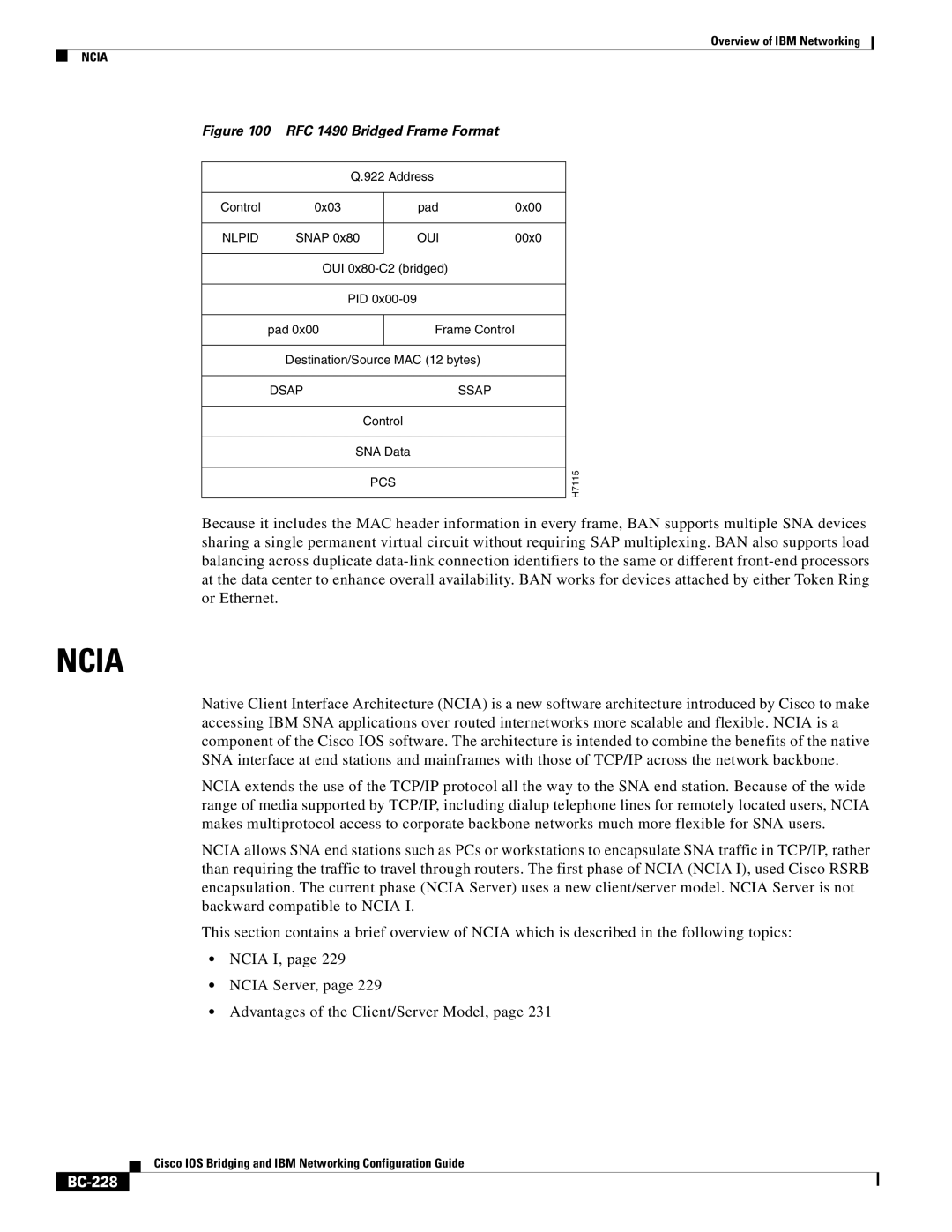
Overview of IBM Networking
NCIA
Figure 100 RFC 1490 Bridged Frame Format
| Q.922 Address |
|
| ||
|
|
|
|
|
|
Control | 0x03 |
| pad | 0x00 |
|
|
|
|
|
|
|
NLPID | SNAP 0x80 |
| OUI | 00x0 |
|
|
|
|
|
| |
| OUI |
|
| ||
|
|
|
|
|
|
| PID |
|
|
| |
|
|
|
|
|
|
| pad 0x00 |
| Frame Control |
|
|
|
|
|
|
| |
| Destination/Source MAC (12 bytes) |
|
| ||
|
|
|
|
|
|
| DSAP | SSAP |
|
| |
|
|
|
|
|
|
| Control |
|
|
| |
|
|
|
|
|
|
| SNA Data |
|
|
| |
|
|
|
|
| H7115 |
| PCS |
|
| ||
|
|
|
| ||
|
|
|
|
|
|
Because it includes the MAC header information in every frame, BAN supports multiple SNA devices sharing a single permanent virtual circuit without requiring SAP multiplexing. BAN also supports load balancing across duplicate
NCIA
Native Client Interface Architecture (NCIA) is a new software architecture introduced by Cisco to make accessing IBM SNA applications over routed internetworks more scalable and flexible. NCIA is a component of the Cisco IOS software. The architecture is intended to combine the benefits of the native SNA interface at end stations and mainframes with those of TCP/IP across the network backbone.
NCIA extends the use of the TCP/IP protocol all the way to the SNA end station. Because of the wide range of media supported by TCP/IP, including dialup telephone lines for remotely located users, NCIA makes multiprotocol access to corporate backbone networks much more flexible for SNA users.
NCIA allows SNA end stations such as PCs or workstations to encapsulate SNA traffic in TCP/IP, rather than requiring the traffic to travel through routers. The first phase of NCIA (NCIA I), used Cisco RSRB encapsulation. The current phase (NCIA Server) uses a new client/server model. NCIA Server is not backward compatible to NCIA I.
This section contains a brief overview of NCIA which is described in the following topics:
•NCIA I, page 229
•NCIA Server, page 229
•Advantages of the Client/Server Model, page 231
Cisco IOS Bridging and IBM Networking Configuration Guide
